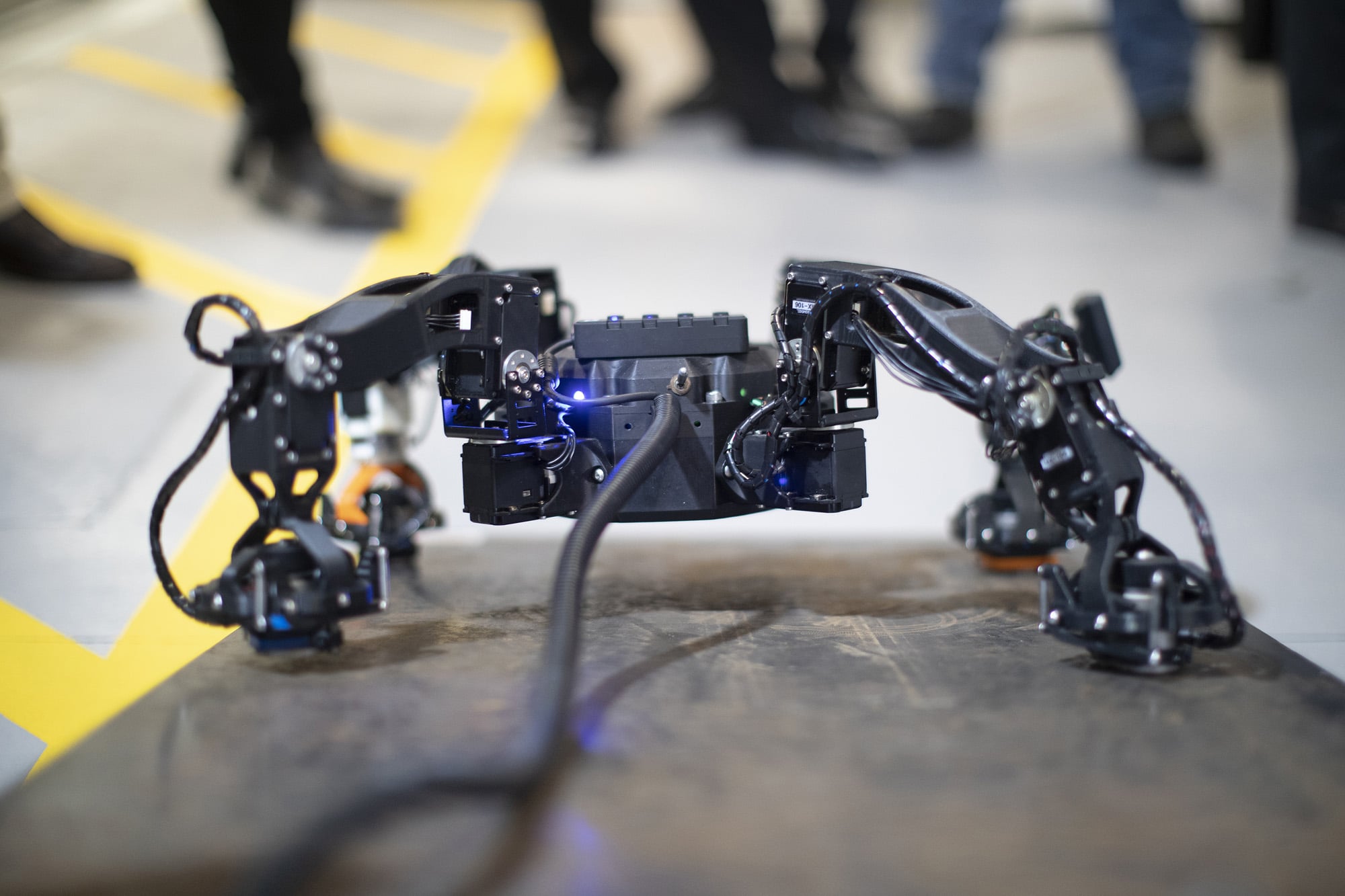Robotics in NDT: The current technology shortfalls

The use of robots for inspection is becoming increasingly more mainstream. However, as with any new technology, there remain hurdles to be overcome. The main issues surrounding the current robots on the market is around dexterity, manoeuvrability and payload.
Today’s robotic inspection options can be classified into three groups:
- Crawlers using magnetic tracks (track-guided crawlers)
- Crawlers using magnetic wheels (wheeled crawlers)
- Drones
Track-Guided Crawlers: pros and cons
In a simple scenario, such as an asset with straight lines and no obstructions, tracked crawlers are reducing many historical challenges, These include reducing the need to erect scaffolding and human entry into a confined space. They can travel long distances, making them a good option for larger asset inspection.
However, these crawlers are limited in many ways, including:
- Can only work on a flat surface
- Can’t manoeuvre around obstructions, such as a larger asset that has a stiffening ring around it or an eye beam that blocks its path
- Can’t cross gaps or traverse a 90o bend
- Can’t transition from a horizontal to vertical axis
Wheeled-Crawlers: pros and cons
Some of the manoeuvrability and dexterity issues encountered with tracked crawlers are overcome with those that have magnetic wheels. These don’t require tracks. Instead, they stay grounded using a magnetic wheelbase. This allows increased movement, such as being able to negotiate a 90o bend.
Yet there are still many limitations to their use:
- They require a magnetic surface to operate, so can’t be used on anything but ferro-magnetic assets
- They can’t travel between assets
- Can’t transition from a horizontal to vertical axis
- There is still the issue with gaps and obstacles, although they can go around some to a certain extent
Drones: pros and cons
Drones provide an alternative inspection option. They overcome some of the access challenges and provide good visibility. Battery life is increasing all the time so although maximum flight times are still short, this is becoming less of an issue.
The greatest challenge around drone inspection is that of payload. 400g or 500g tends to be the maximum a standard drone can carry, which is a big restriction when it comes to gaining adequate inspection images.
Payload is also a challenge with crawler robots. Both tracked and wheeled crawlers are limited to around 2 kgs, meaning there’s not much scope for them to carry out additional tasks, such as cleaning or maintenance.
These challenges are not insurmountable. Indeed, novel robotic options to solve them are the focus of trials, prototypes and ready-to-market solutions. Innovation leader, Nexxis, is at the forefront of this drive. Already the go-to equipment provider for organisations looking for a dynamic, solutions-based blueprint for procurement, their collaborative working with custom engineering firm, SixDe, and robotics training experts, Lab61, provides a unique model that gives their customers access to the very latest technology.
The robotics sector is accelerating at a never before seen pace and the industry winners will be those that utilise the many advantages this brings.
Discover more about this refreshing approach to robotic inspection or contact us today for a no-obligation chat.
